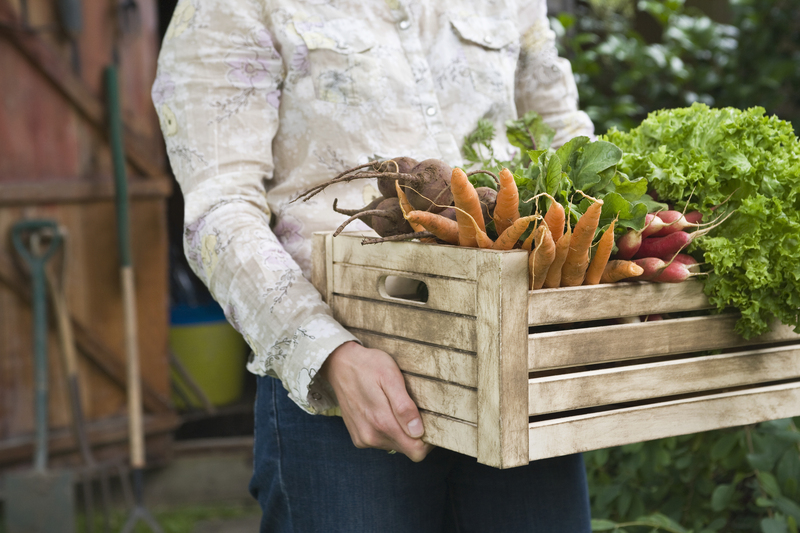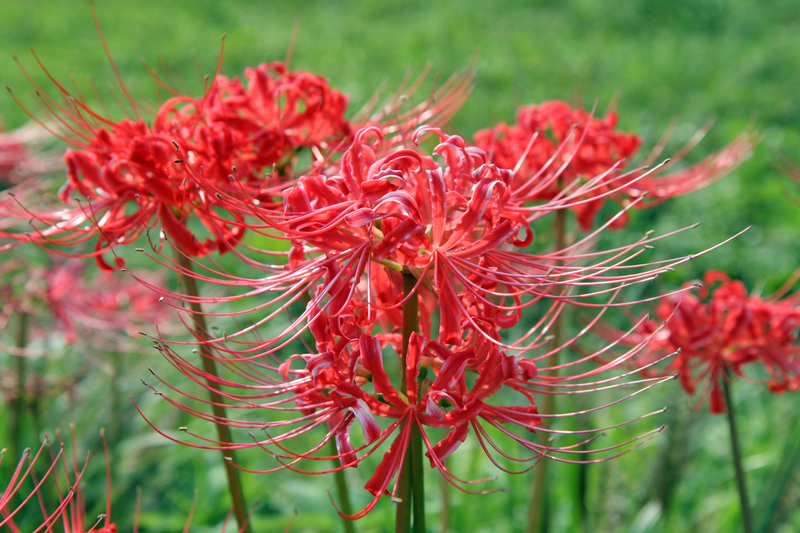Essential Tips for Healthier Orchids
Posted on 15/09/2025
Essential Tips for Healthier Orchids: The Ultimate Guide
Orchids are among the most captivating and diverse plants you can cultivate. Their unique blooms, elegant forms, and intriguing variety make them a favorite among plant enthusiasts. However, growing healthy orchids comes with unique challenges. Whether you're a beginner or an experienced gardener, understanding the fundamentals of orchid care is crucial for vibrant, long-lasting blooms.
In this comprehensive guide, we'll unveil essential tips for healthier orchids, covering everything from choosing the right species to optimal light, watering, feeding, and troubleshooting common problems.
Understanding Orchids: The Basics
Orchids are members of the Orchidaceae family, one of the largest plant families worldwide. With over 25,000 species and 100,000 hybrids, orchids thrive in almost every climate. While their diversity is vast, their care patterns often overlap.
The Most Popular Orchid Types
- Phalaenopsis (Moth Orchid): Beginner-friendly, beautiful blooms that last for months.
- Cattleya: Known for their striking, fragrant flowers.
- Dendrobium: Towers of blooms with varied forms and resilience.
- Oncidium: Also called "Dancing Lady" orchids due to their petal shape.
While each type has distinct characteristics, the following essential orchid care tips can be widely applied, ensuring your plants remain healthy and vibrant.

Choosing the Right Orchid: Setting Yourself Up for Success
Beginners should start with species like Phalaenopsis due to their hardiness and adaptability. It's vital to pick healthy plants. Look for:
- Firm, green leaves without black spots or wilting
- Plump, silver-green roots visible above the potting media
- Absence of pests, such as mealybugs or spider mites
- No yellowing or shriveled bulbs
Remember, a strong start with a healthy orchid means a higher chance of success in your growing journey.
The Right Environment: Light, Temperature, and Humidity
Light Requirements
Orchids need bright, filtered light. Direct sun can scorch their leaves, while too little light inhibits blooming. Place your orchids near an east- or west-facing window, where they receive morning or late-afternoon sunlight. If you see dark green leaves, your orchid may lack light. Yellowish-green leaves indicate proper sun exposure.
- Use sheer curtains to diffuse intense sunlight
- Rotate your plant weekly for uniform growth
- If natural light is insufficient, consider LED grow lights rated for orchids
Temperature and Humidity
Temperature: Orchids thrive in temperatures ranging from 65-80?F (18-27?C) during the day, and 55-65?F (13-18?C) at night. Avoid exposing them to sudden temperature changes or drafts.
Humidity: Orchids adore humidity -- aim for 40% to 70%.
- Use a humidity tray: Place pebbles and water under your pot (but not touching the roots)
- Room humidifiers help, especially in winter
- Mist leaves regularly with distilled water, but avoid water pooling in the crown
Watering Orchids Correctly
One of the most common causes of unhealthy orchids is improper watering. Overwatering leads to root rot, while underwatering causes dehydration.
- Water only when the top 1-2 inches of potting media feel dry.
- Use tepid water.
- Let water drain completely -- do not allow the pot to sit in water.
- In general, most orchids need weekly watering, but adjust frequency for temperature and humidity.
- Water in the morning, so roots dry by evening.
Tip: In winter, orchids require less water due to dormancy and lower light.
Potting and Repotting Orchids
Healthy roots are key for thriving orchids. Unlike most houseplants, orchids prefer an airy, well-draining medium instead of soil.
Best Orchid Potting Mixes
- Bark chips (pine or fir)
- Sphagnum moss
- Leca (clay pebbles)
- Perlite or charcoal for drainage
Repot your orchid every 1-2 years, or if the potting media breaks down and retains too much moisture. Signs you need to repot include roots growing over the pot's edge, sour odor, or compacted mix. Select transparent pots to easily monitor root health and moisture.
Feeding for Stronger, More Resilient Orchids
Orchids require special nutrients to maintain robust health and boost flowering. A balanced, water-soluble fertilizer formulated for orchids is ideal.
- Use a 20-20-20 (N-P-K) orchid fertilizer for general growth
- Fertilize "weakly, weekly": dilute to quarter-strength and apply every 2-4 weeks
- Flush pots with plain water monthly to avoid salt build-up
- Suspend feeding while orchids are dormant
Too much fertilizer can damage roots -- less is more for orchids!
Air Circulation: The Silent Guardian of Orchid Health
Stagnant air can lead to fungus and rot. Orchids benefit from gentle airflow, mimicking their natural environment.
- Use an oscillating fan nearby, set to low
- Open windows when weather permits
- Avoid blasting air directly onto the plant
Steady airflow helps prevent common orchid diseases and keeps leaves dry after watering.
Pruning, Grooming and Cleaning Orchids
Proper pruning encourages healthier orchids and future blooming.
- Remove spent blooms and yellow leaves with sterilized scissors to prevent infection.
- Trim dead or soggy roots when repotting.
- Wipe leaves gently with a damp cloth to remove dust and discourage pests.
Always sanitize tools before use to avoid transmitting diseases or fungi from one plant to another.
Troubleshooting: Common Problems and Solutions
Even with the most careful care, orchids can encounter issues. Here's how to spot, prevent, and treat the most common orchid problems:
Yellowing Leaves
- Usually caused by overwatering or too much sun.
- Solution: Adjust watering habits; relocate to filtered light.
Wrinkled Bulbs or Leaves
- Signs of underwatering or intense heat.
- Solution: Water more consistently; check for proper humidity levels.
Pest Infestations
- Mealybugs, aphids, or spider mites are common offenders. Leaves may appear sticky or with webbing.
- Solution: Isolate affected orchids, clean with insecticidal soap, and manually remove pests.
Root Rot
- Caused by soggy, compacted media and overwatering.
- Solution: Remove affected roots with sterilized scissors, repot in fresh mix, and reduce watering frequency.
Failure to Bloom
- Lack of light or insufficient temperature drop at night is often the cause.
- Solution: Provide more light or simulate seasonal changes by lowering nighttime temperatures.
Expert Tips for Flourishing Orchids
- Group orchids together for increased humidity and shared ecosystem benefits.
- Label each plant with species, date of acquisition, and repotting history for easy tracking.
- Be patient; orchids take time to adapt and establish. Do not disturb roots unnecessarily.
- Attend local orchid shows or join online forums to learn from seasoned orchid growers.
- Make observation a habit--early intervention can save your orchid from many problems.
Enjoying the Rewards: Flowering, Propagation and Longevity
Healthy orchids not only produce breathtaking blooms, but can also live for decades with proper care, continuously bringing beauty to your space.
How to Encourage More Blooms
- After first flowering, continue care as usual -- many orchids rebloom from the same spike if left intact.
- Provide a mild nighttime temperature drop to stimulate flowering.
- Withhold water slightly in the weeks before expected bloom for some types, but research your specific orchid.
Orchid Propagation
- Most commonly done through keiki (baby plantlets) or division after reaching maturity.
- Be gentle! Only attempt propagation on healthy, established orchids.

Conclusion: Cultivating Success With Your Orchids
Growing healthy orchids at home is a rewarding journey that blends science, patience, and artistry. By following these essential tips for healthier orchids, you'll empower your cherished plants to thrive year-round. Remember, attentive care -- the right light, water, feeding, and environment -- will be rewarded with stunning blooms and vigorous growth. Happy growing!
Frequently Asked Questions About Orchid Care
How often should I water my orchid?
Most orchids need watering once a week, but always check if the top 1-2 inches of media are dry before watering. Environmental factors such as humidity and temperature can affect frequency.
What is the best light for orchids?
Orchids thrive in bright, indirect light. An east-facing window filtered with a sheer curtain is ideal for most orchid species.
Why are my orchid's leaves turning yellow?
Yellow leaves are commonly caused by overwatering, too much sunlight, or a natural process as old leaves shed. Adjust your care routine if you notice yellowing.
How do I get my orchid to bloom again?
Ensure the orchid receives enough light, and provide a slight drop in night temperature. Continue regular care, and don't remove healthy stems or spikes, as many orchids bloom multiple times from the same stem.
Can I grow orchids outdoors?
Yes, provided your climate matches the orchid type's needs. Most orchids prefer mild to warm temperatures and indirect light. Always shield them from harsh weather.
For more in-depth guides on orchid care essentials, bookmark this page and keep exploring the captivating world of orchids!

